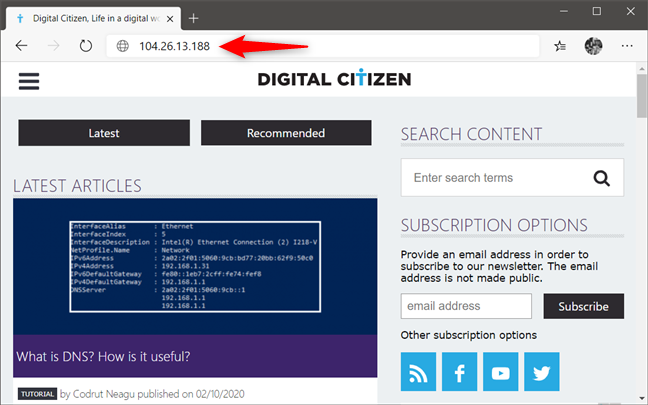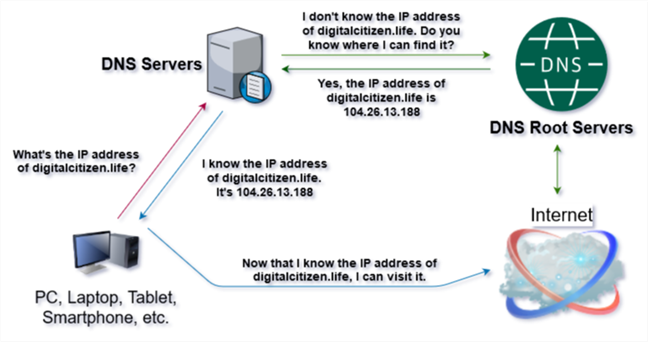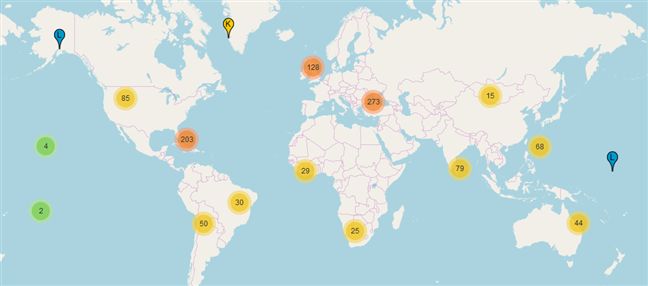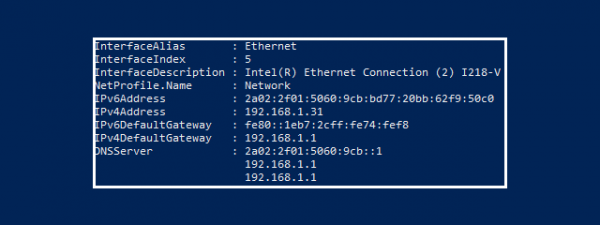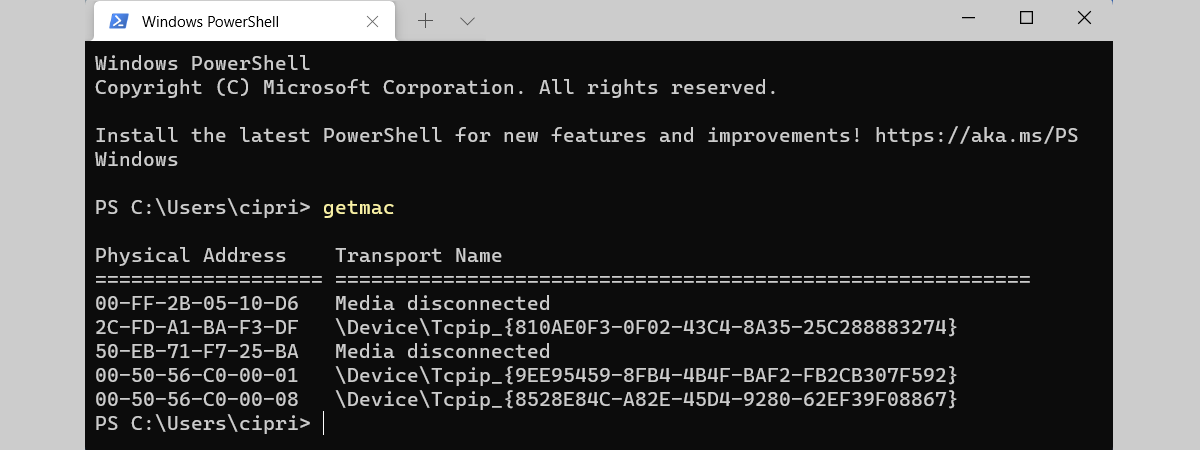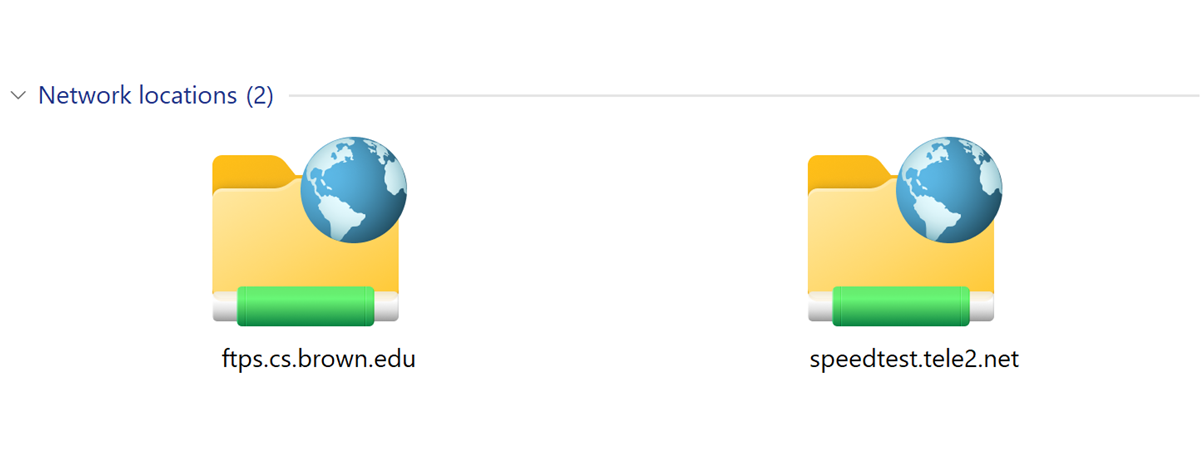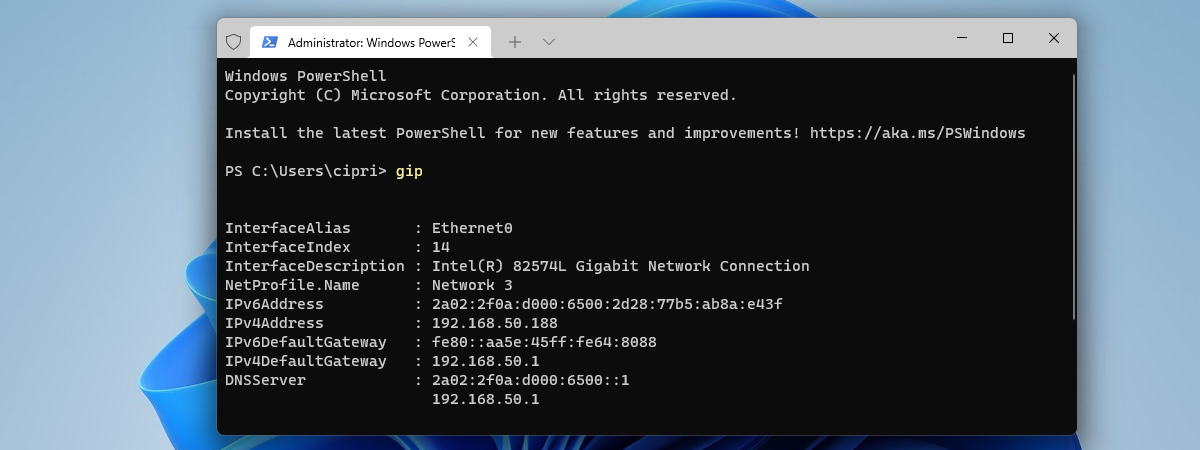
Have you heard of the term DNS? Did you stumble upon error messages that told you that the DNS server could not be reached? Do you know what a DNS is and what its purpose is? If you want to find out, read this guide. We explain what DNS is, its role on the internet, and how it works. To be thorough, we're also going to go through a bit of its history. Let's get started:
What is DNS (Domain Name System)?
DNS stands for "domain name system," and it is a standard used for managing the IP addresses of websites all over the world. In computer language, every website on the internet has an IP address where it can be found. For instance, our Digital Citizen website can be found at the IP address 104.26.13.188.
Computers and other devices have no issues in remembering and using IP addresses for an unlimited number of websites. However, people like you and me have a hard time doing that. In the end, it is so much easier to remember digitalcitizen.life than it is to remember a series of numbers like 104.26.13.188. That's why the DNS technology exists:
The purpose of DNS is to translate the IP addresses of websites on the internet into something readable, easy to understand and remember for us humans.
In a way, you could look at the DNS tech like a huge phonebook that associates a name with every website IP address in the world. The difference between DNS and a real phonebook is that instead of phone numbers, you have IP addresses. It is normal for us to remember our friends' names, but not their phone numbers. When you want to call one of your friends, you just open the phonebook on your smartphone and call them by their name.
Just like you don't have to remember your friends' phone numbers, you don't have to remember the IP addresses of websites in order to be able to visit them. All you need to remember is their names, and the DNS technology automatically associates them with the correct IP addresses.
How does DNS work?
Now you know what DNS stands for and what it does. But how does it do what it does? The answer is: the DNS does its job through DNS servers. They are special servers that store large databases of IP addresses of various websites from the internet, as well as the IP addresses of other DNS servers that do the same thing.
When you want to visit a website, your computer or device asks its DNS server if it knows the IP address of that website. If it does and your computer receives an answer, you are immediately relayed to that website's IP address. This process is called DNS lookup. It is like the search function on your smartphone's phonebook.
However, it is possible that the DNS server set on your computer or device doesn't know the IP address of a website that you are trying to visit. It's something that can happen because maintaining a database with all the websites in the world is a titanic task. However, DNS servers are not lost islands in a sea of websites: they are also connected among themselves and they also maintain a hierarchy. If a DNS server doesn't know the IP address of a certain website, it relays the question to another DNS server, that is higher in the hierarchy. When a result is found, the response is forwarded back to your computer or device.
This whole "ask and respond" process happens in milliseconds. It is so fast that you don't get to know which DNS server has relayed the IP address of the website that you are trying to visit. However, modern day computers, devices, and apps don't like any delay, as small as it might be, so most of them also keep caches of their DNS requests. That way, they can open a website you've already visited even faster the next time you visit it.
If you're wondering who maintains DNS servers, you should know that such servers are maintained by a whole range of different entities, starting from your ISP (Internet Service Provider) to governmental organizations and universities from all over the world.
A bit earlier in this article, we briefly mentioned that DNS servers are not only communicating among themselves, but they also have a hierarchy put in place. This statement probably made you curious to find out which DNS server out there is the "king of the hill." 🙂 Here's the answer: there are 13 kings, meaning that all the DNS servers in the world relay to these thirteen main - "top of the food chain" - DNS servers. They also bear the name of DNS root servers.
However, don't assume that there are only 13 physical root servers out there. In reality, each of these root DNS servers uses redundant network equipment, and are spread geographically in multiple locations, so that if one of the physical DNS servers goes down, the internet does not. To be more precise, there are 13 root servers maintained by 12 operators (which are independent organizations), and there are 1038 instances (aka physical DNS root servers) all over the world.
If you want to know who maintains them and where they're geographically located, you can find the list on Wikipedia - Root name server and root-servers.org. Spoiler alert: most of the root DNS operators are from the United States of America.
When was DNS invented, and by whom?
DNS or Domain Name System was invented by a man called Paul Mockapetris, back in 1983. Before that, the internet pretty much didn't exist. However, the computers that were part of ARPANET, a computer network that was created and maintained by ARPA (Advanced Research Projects Agency, from United States' Department of Defense), all relied on numerical addresses to be able to communicate between themselves. ARPANET was one of the foundations on which the internet as we know it today was built. The numerical addresses of the hosts in ARPANET were added manually and were initially stored in a HOSTS.txt file that was used to translate them into human-readable names.
However, using only that HOSTS.txt file soon became too slow, as the number of hosts (computers) was adding up. The solution to this problem came from Paul Mockapetris, who had to invent a way to make the networks easier and more friendly to use by people. In other words, he had to find a way to assign names to numbers, so that people wouldn't have to learn numerical addresses for all the computers to which they connected.
And so, DNS appeared: a system that divides the naming responsibilities across multiple servers, found in different places on the network. The Domain Name System had the great advantage of being able to provide answers (translating names to numerical addresses) even if some of the servers went down, as the others that were still working could provide the same functionality.
Would you like to learn more about DNS?
If you answered Yes to this question, then we're ready to help. Over the years, we've published quite a few tutorials and guides related to DNS. If you're eager to learn, feel free to browse through the list:
- 3 ways to change the DNS settings in Windows 10
- What is my DNS? 5 ways to find out, in Windows 10
- What is a third-party DNS server? 8 reasons to use public DNS servers
- What is DNS over HTTPS or Secure DNS lookups? Enable it in Google Chrome!
- How to enable DNS over HTTPS in Firefox
Now you know more about DNS. Is there anything else you'd like to learn?
Now that you know the basics of what the DNS technology is and how it works, you should have an easier time understanding certain issues you stumble upon when browsing the internet. If you have any questions about DNS or you would like to share more information about DNS servers, do not hesitate to leave a comment in the section below.




